[/caption]
NASA’s solar powered Juno spacecraft blasted off today (Aug.5)from Cape Canaveral today to begin a 2.8 billion kilometer science trek to discover the genesis of Jupiter hidden deep inside the planet’s interior.
Upon arrival at Jupiter in July 2016, JUNO will fire its braking rockets and go into polar orbit and circle the planet 33 times over about one year. The goal is to find out more about the planets origins, interior structure and atmosphere, observe the aurora, map the intense magnetic field and investigate the existence of a solid planetary core.
The spacecraft is healthy and the solar panels successfully deployed.
Check out the photo album of Juno’s launch from the Universe Today team of Alan Walters and Ken Kremer.
“Jupiter is the Rosetta Stone of our solar system,” said Scott Bolton, Juno’s principal investigator from the Southwest Research Institute in San Antonio. “It is by far the oldest planet, contains more material than all the other planets, asteroids and comets combined and carries deep inside it the story of not only the solar system but of us. Juno is going there as our emissary — to interpret what Jupiter has to say.”
Juno was launched atop a powerful Atlas V rocket augmented by 5 solid rocket boosters – built by United Launch Alliance
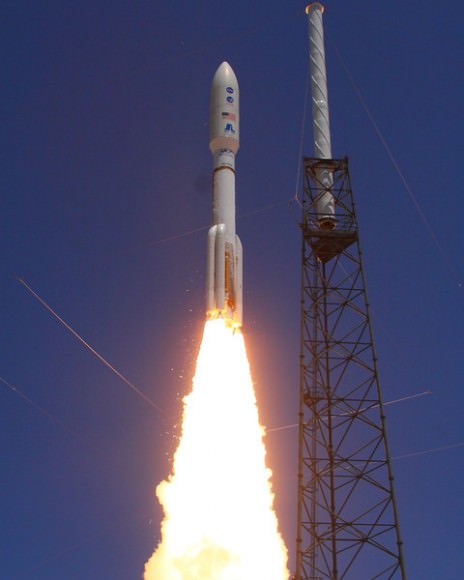
“Today, with the launch of the Juno spacecraft, NASA began a journey to yet another new frontier,” NASA Administrator Charles Bolden said. “The future of exploration includes cutting-edge science like this to help us better understand our solar system and an ever-increasing array of challenging destinations.”
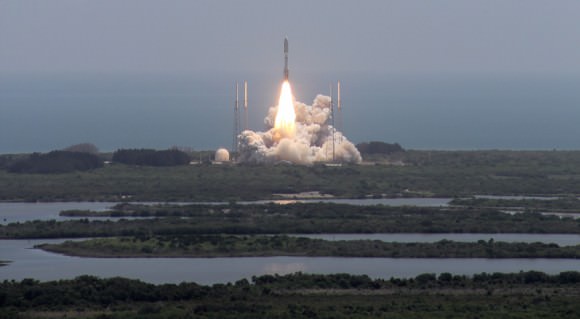
Atlas V liftoff with JUNO to Jupiter on Aug. 5 from Cape Canaveral Air Force Station. Credit: Ken Kremer
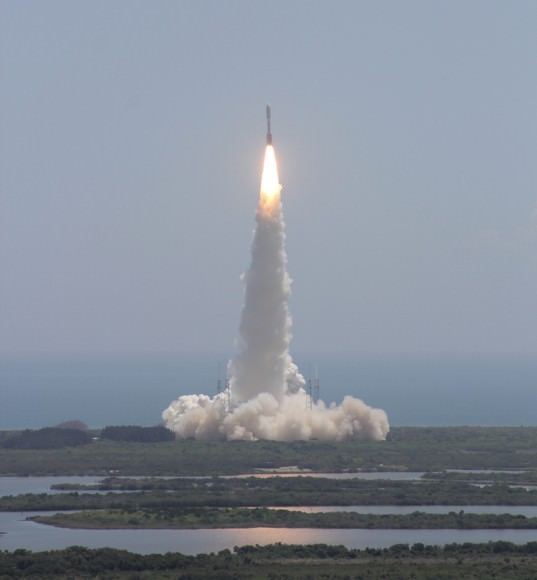
Atlas V liftoff with JUNO to Jupiter on Aug. 5 from Cape Canaveral Air Force Station. Credit: Ken Kremer (kenkremer.com)
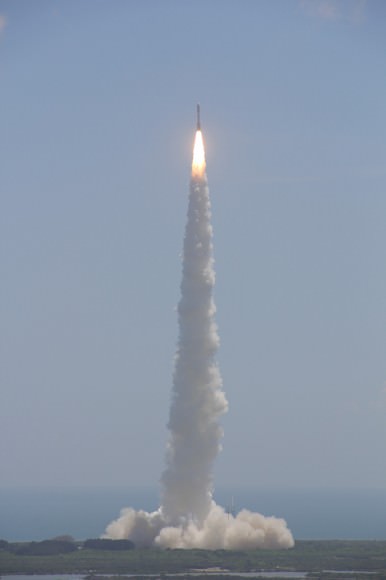
JUNO blasts off for Jupiter on Aug. 5 atop an Atlas V rocket from Cape Canaveral Air Force Station at 12:25 p.m. EDT.
Credit: Ken Kremer (kenkremer.com)
Send Ken your Juno launch photos to post at Universe Today
Read my continuing features about Juno
Juno Jupiter Orbiter poised at Launch Pad for Aug. 5 Blastoff
JUNO Orbiter Mated to Mightiest Atlas rocket for Aug. 5 Blastoff to Jupiter
Solar Powered Jupiter bound JUNO lands at Kennedy Space Center

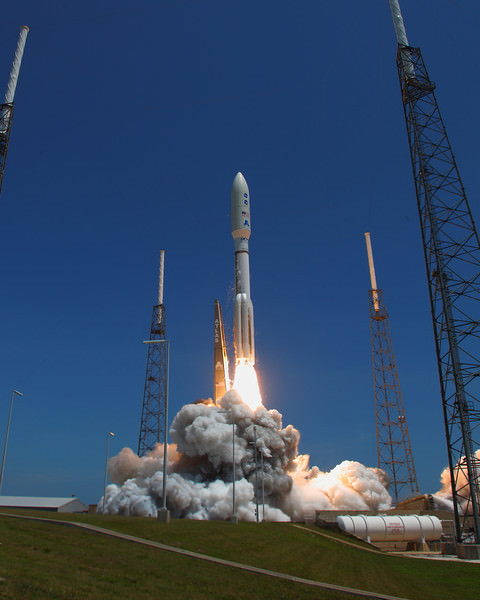
It was a beautiful launch! I got video… http://lightsinthedark.wordpress.com/2011/08/05/juno-launches/
I am really surprised NASA is sending another Probe to Jupiter but not focusing on Europa. I would think another MARS mission would be more useful than another Jupiter study. Am I missing something here?
Yes, you are. Ignoring that we currently have active missions to Mars, as the largest planet Jupiter will likely have unique internal dynamics. Understanding how it generates its massive magnetic field could have lasting implications.
Yes, you are. Ignoring that we currently have active missions to Mars, as the largest planet Jupiter will likely have unique internal dynamics. Understanding how it generates its massive magnetic field could have lasting implications.
Is there a reason for another Jupiter mission without going to Europa that I don’t understand? This seems like a waste of a science mission. To find out the secrest of the creation of Jupiter? With a polar probe?
Obviously you’ve never seen the 2001 sequel, 2010. All worlds are ours, except Europa. We are to attempt no landing there. The monolith was very clear on this, and you don’t mess with monoliths. Look what it did to poor Keir Dullea.
P.S. Spoiler alert…
Maybe it wasn’t science fiction after all?
Understanding giant structure and hopefully formation has become important for understanding planetary system formation. (And so habitability, precisely as Europa.)
For the large missions there seems to be a “max every other return” principle, and Jupiter was important enough to warrant that: next large one (NASA & ESA coop) is to Jupiter. However, a dedicated Europa seems to have been too early/too expensive.